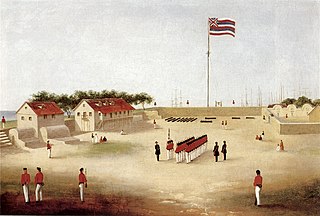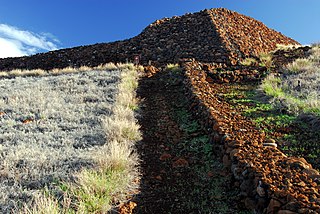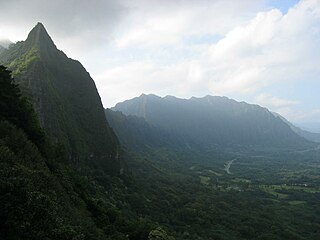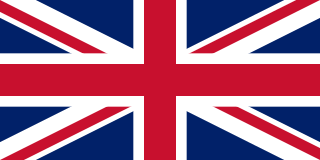 W
WThe 1895 Wilcox rebellion was a brief war from January 6 to January 9, 1895, that consisted of three battles on the island of Oʻahu, Republic of Hawaii. It was the last major military operation by royalists who opposed the overthrow of the Kingdom of Hawaii.
 W
WThe First Bombardment of Midway, or the First Bombardment of Sand Island, or Attack on Midway, was a small land and sea engagement of World War II. It occurred on the very first day of the Pacific War, 7 December 1941, not long after the major attack on Pearl Harbor. Two Imperial Japanese destroyers bombarded Sand Island of Midway Atoll. The Japanese successfully damaged the U.S. Marine base before being engaged by American shore batteries and forced to flee.
 W
WThe 1790 Footprints refer to a set of footprints found near the Kīlauea volcano in present-day Hawaii Volcanoes National Park on the island of Hawaiʻi. Resulting from an unusually explosive eruption, they may be associated with a series of battles in the area in 1790.
 W
WThe Hawaiian rebellions and revolutions took place in Hawaii between 1887 and 1895. Until annexation in 1898, Hawaii was an independent sovereign state, recognized by the United States, United Kingdom, France and Germany with exchange of ambassadors. However, there were several challenges to the reigning governments of the Kingdom and Republic of Hawaii during the 8+1⁄2-year (1887–1895) period.
 W
WThe French invasion of Honolulu was an attack on Honolulu by Louis Tromelin in 1848 in retribution for the local persecution of Catholics and repression of French trade.
 W
WPuʻukoholā Heiau National Historic Site is a United States National Historic Site located on the northwestern coast of the island of Hawaiʻi. The site preserves the National Historic Landmark ruins of the last major Ancient Hawaiian temple, and other historic sites.
 W
WThe Battle of Kepaniwai was fought in 1790 between the islands of Hawaiʻi and Maui. The forces of Hawaiʻi were led by Kamehameha I, while the forces of Maui were led by Kalanikūpule. It is known as one of the most bitter battles fought in Hawaiian history.
 W
WOn 14 February 1779, English explorer Captain James Cook attempted to kidnap Kalaniʻōpuʻu, the ruling chief of the island of Hawaii. The decision to hold him in exchange for a stolen longboat was the fatal error of Cook's final voyage, and led to his death at Kealakekua Bay.
 W
WThe Kuamoʻo Burials is an historic Hawaiian burial site for warriors killed during a major battle in 1819. The site is located at Kuamoʻo Bay in the North Kona District, on the island of Hawaiʻi, United States.
 W
WThe Laplace affair or the French Incident was a military intervention by the Kingdom of France in 1839 to end the persecution of Catholics in the Kingdom of Hawaii, which had been promoted by Protestant ministers. Under the threat of war, King Kamehameha III agreed to the French demands to stop the detention of Catholic citizens and pay reparations.
 W
WThe Leper War on Kauaʻi also known as the Koolau Rebellion, Battle of Kalalau or the short name, the Leper War. Following the overthrow of the Kingdom of Hawaii, the stricter government enforced the 1865 "Act to Prevent the Spread of Leprosy" carried out by Attorney General and President of the Board of Health William Owen Smith. A revolt broke out in Kauaʻi, against the forced relocation of all infected by the disease to the Kalaupapa Leprosy Colony of Kalawao on the island of Molokai.
 W
WThe Battle of Mokuʻōhai, fought in 1782 on the island of Hawaiʻi, was a key battle in the early days of Kamehameha I's wars to conquer the Hawaiian Islands. It was his first major victory, solidifying his leadership over much of the island.
 W
WThe Battle of Nuʻuanu, fought in May 1795 on the southern part of the island of Oʻahu, was a key battle in the final days of King Kamehameha I's wars to unify the Hawaiian Islands. It is known in the Hawaiian language as Kalelekaʻanae, which means "the leaping mullet", and refers to a number of Oʻahu warriors driven off the cliff in the final phase of the battle. There are "varied and sometimes conflicting histories of the Battle of Nuʻuanu."
 W
WThe Paulet affair was the five-month occupation of the Hawaiian Islands in 1843 by British naval officer Captain Lord George Paulet, of HMS Carysfort.
 W
WThe Wilcox rebellion of 1889 was a revolt led by Robert Wilcox to force King Kalākaua of Hawaii to reenact the Hawaiian Constitution of 1864 from the Constitution of 1887.